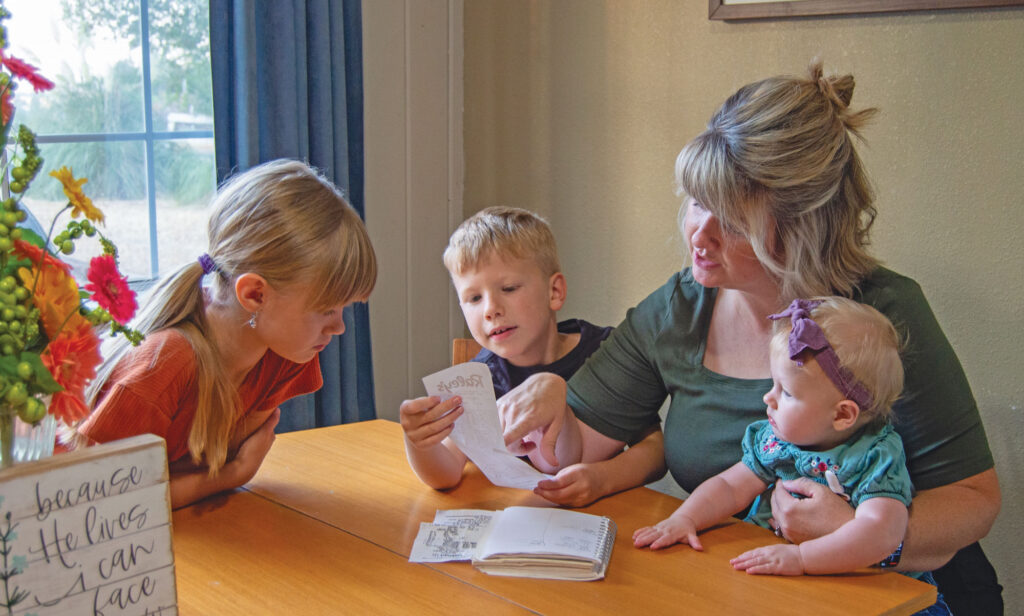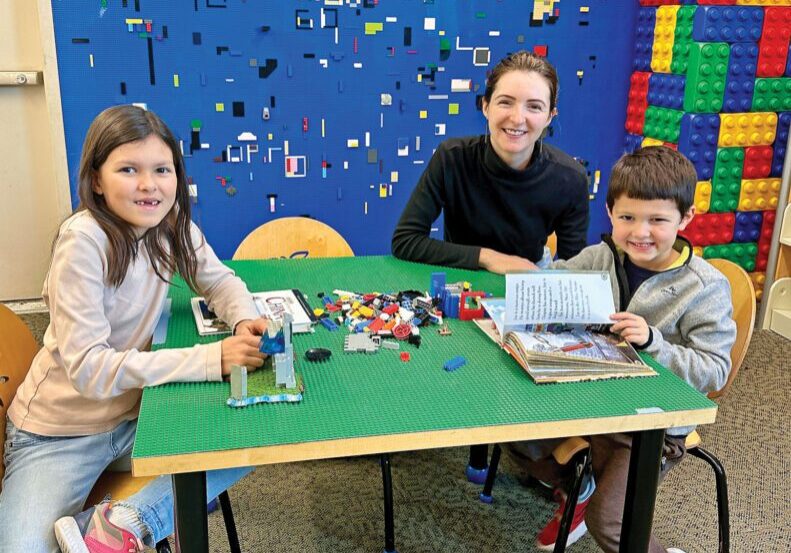According to the student loan company, Sallie Mae, students aged 18 to 24 carried an average credit card debt of $1,183 in 2019. According to a report from College Finance, this average had increased to $3,280 in 2021 – a jump of almost 280%. Although some of this increase could be related to “pandemic spending”, it appears that credit card debt among young adults isn’t going away, but is increasing.
Educating kids on how to use credit cards responsibly is crucial to their future financial well-being. Fortunately, those who learn good saving habits early in life are more prepared to deal with what lies ahead and develop into financially responsible adults.
Keep it simple for ages four to six
Begin teaching your child the concept of money, including the values of coins, from the ages of four to six. During this time keep it simple. Allow your child to earn money from small chores and to save it in a piggy bank. By the time your child is seven, an allowance is essential to learning about money and developing good habits. Familiarize your child with banking. Open a savings account so she can watch her money grow. Set achievable goals, such as saving for a new toy or putting away for holiday gifts.
Set up your own family bank
Keep in mind, many banks charge service fees unless a minimum balance is kept, and frequent trips to the bank may be impossible. As an alternative, set up your own “family bank.” Give your child a spare checkbook ledger or savings passbook. Then copy blank savings deposit and withdrawal slips from your bank for your child to use. Require him to fill out the slips and log transactions in the ledger. Also, give your child monthly interest for his savings so he can experience the immediate reward of saving money.

Anneliese Peterson, mom of 5 children, keeps an eye on the family budget. Photo by Kimberly Parodi
Involve teens with the family budget
Designer clothing, entertainment and car expenses are the biggest areas of teen spending. Some teens also put away for college. But few are prepared for the adult world, says developmental psychologist Nancy J. Cobb in her book Adolescence: Continuity, Change, and Diversity. That’s because most teens aren’t primed for the responsibility of paying for food, housing, and healthcare costs.
Those teens involved with the family budget and who contribute to family expenses learn a valuable lesson. Opting to show teens the spending categories in which they have a direct impact on family expenses is helpful. Also, agreeing on a reasonable amount which teens can contribute to help cover those expenses can go a long way toward preparing teens for adulthood.
Provide guidance and allow them to learn from mistakes
There are many ways teens can learn the value of money and develop good habits. Help your child develop good saving and spending habits. Allow your child to make some of her own spending decisions. Place reasonable limits. Then offer appropriate guidance while giving your child opportunities to learn from her mistakes.
Saving and loaning
Don’t loan your child money every time he wants it. But do offer occasional opportunities for him to learn the costs of borrowing and the experience of repaying the loan. When deciding whether to loan money to your child and how much, consider the purpose of the loan, past repayment, and his ability to repay within a reasonable time. Charge interest on loans so children learn the cost of borrowing. Realize, regardless of how financially savvy we raise our kids to be, borrowing does have its place. At the very least, it’s often necessary or practical for acquiring a college education, reliable transportation and a home. These can be wise investments even when borrowing is necessary.
Teach your child how to set financial goals. And don’t overlook the importance of short-term goals, which offer your kids a feeling of accomplishment and a boost in self-esteem. Require your child to put at least 10% of each paycheck, or allowance, into savings. It’ll be much easier to adhere to as an adult if practiced during childhood and teen years.
Don’t be completely secretive about family finances. Children have few opportunities to see and experience the financial side of the adult world. This doesn’t mean you need, or even should, disclose everything. But it’s easier for kids to understand if they can see it in concrete terms. Develop a detailed household budget. Discuss the different ways in which you save and invest your own money and explain how these different plans work. Point out both the benefits and the risks. Then explain it so your adolescent can see how your family spends and why.
Posted in: Frugal Families
Comment Policy: All viewpoints are welcome, but comments should remain relevant. Personal attacks, profanity, and aggressive behavior are not allowed. No spam, advertising, or promoting of products/services. Please, only use your real name and limit the amount of links submitted in your comment.
You Might Also Like...

Your Library is a Portal to Value
Entertainment, research, faraway lands, times gone by and new things to learn; your local library is a portal to all this and more. The hush of the traditional library with […]

Budget-Friendly Grocery Tips
With the cost of food rising, watching the family food budget and stopping those budget-busting money leaks, while providing nutritious meals your family will enjoy has become essential for many […]

Caring Gifts for Parents and Grandparents
Gifts from the Heart – From Kids to Parents and Grandparents Handmade gifts from the heart are treasures that will always be cherished by parents, grandparents, and those who have […]

Raising Creative Kids On A Budget
In our increasingly structured and media-saturated society, kids often don’t get the time or space to be creative. Many of us think of creativity as only pertaining to the arts. […]



